Health Care > EXAM > West Coast EMT Block 3 Exam Questions and Answers (All)
West Coast EMT Block 3 Exam Questions and Answers
Document Content and Description Below
Stroke is the __ leading cause of death in the US. - ANSWER third aneurysm - ANSWER swelling of a blood vessel that weakens the vessel wall aphasia - ANSWER inability to produce speech aura -... ANSWER warning sign for a seizure Cerebrovascular Accident (CVA) - ANSWER stroke Coma - ANSWER unconsciousness that can't be broken Dysarthria - ANSWER slurred speech embolus - ANSWER a clot that travels to the clot sight Febrile Seizures - ANSWER in children; from high fevers Generalized Seizure - ANSWER grand mal; twitching Hemiparesis - ANSWER weakness to one side of the body Hemorrhagic Stroke - ANSWER bleeding in the brain Hypoglycemia - ANSWER low glucose level Incontinence - ANSWER loss of bowel or bladder control Ischemia - ANSWER lack of oxygen to the cells ischemic Stroke - ANSWER clot inside of a vessel Partial Seizure - ANSWER only affects part of the brain Postictal State - ANSWER labored respirations and altered mental status that occurs between 5-30 minutes after a seizure Seizure - ANSWER convulsion that results in a loss of consciousness Status Epilepticus - ANSWER continuous that can last up to 30 minutes Stroke - ANSWER interruption of blood flow to the brain that prohibits function Thrombosis - ANSWER clotting of the cerebral arteries that can cause a stroke Tonic-Clonic Seizures - ANSWER back and forth motion and body stiffness Transient Ischemic Attack (TIA) - ANSWER brain cells stop working temporarily due to insufficient oxygen; causes stroke like symptoms that last up to 24 hours The time of onset during a suspected stroke is critical because it helps determine___. - ANSWER whether the patient is a candidate for treatment with clot dissolving drugs. Petit mal seizures are also called - ANSWER Absence Seizures A patient who almost always has an altered or decreased level of consciousness usually is suffering from___. - ANSWER Hypoglycemia More than 80% of strokes are ________ strokes. - ANSWER ischemic Acute Abdomen - ANSWER sudden onset of pain in the abdomen; often related to peritonitis Cholecystitis - ANSWER inflammation of the Gallbladder Cystitis - ANSWER inflammation of the bladder Emesis - ANSWER vomiting ileus - ANSWER constipation caused by lack of bowel functions Kidney Stones - ANSWER sharp stones that pass through the urinary tract Pancreatitis - ANSWER inflammation of the pancreas Peritoneum - ANSWER protects abdomen referred pain - ANSWER pain that travels from one area to another Uremia - ANSWER severe kidney failure that can effect brain functions Urinary Tract Infection (UTI) - ANSWER when normal flora bacteria enters the urethra, it turns into an infection Diverticulitis - ANSWER inflammation in the pockets of the abdominal wall ; in the LLQ An aortic aneurysm will occur in which area of the body? - ANSWER lower back and lower quadrants During the baseline vital sign check, the last vital sign to change is___. - ANSWER blood pressure the condition of a patient with an acute abdomen can rapidly change from___ to ____. - ANSWER stable/ unstable Where will you find localization of pain for a patient with a kidney stone? - ANSWER radiating to the genitalia Patients with cystitis usually have____. - ANSWER lower abdominal pain When the waste product that is normally excreted into the urine remains in the blood, this can lead to ___. - ANSWER uremia Acidosis - ANSWER accumulations of acids in the body Aplastic Crisis - ANSWER body stops producing Red Blood Cells and is caused by infections Diabetes Mellitus - ANSWER metabolization of carbs/ sugars are impaired Diabetic Ketoacidosis (DKA) - ANSWER a type of hypoglycemia in uncontrolled in which certain acids accumulate when insulin is not available Endocrine Glands - ANSWER secrete chemicals into the body Endocrine System - ANSWER regulates chemical release Glucose - ANSWER produces sugars for the body Hematology - ANSWER prevention of blood related disorders Hemolytic Crisis - ANSWER rapid destruction of red blood cells that occurs faster than reproduction Hemophilia - ANSWER lack of clot production Hormone - ANSWER regulates organs and tissues Hyperglycemia - ANSWER high glucose Insulin - ANSWER enables glucose to enter the cells Kussmaul Respirations - ANSWER deep and rapid breathing that occurs when insulin is unavailable to the body Polydipsia - ANSWER excessive thirst Polyphagia - ANSWER excessive eating Polyuria - ANSWER excessive urination Sickle Cell Disease - ANSWER causes red blood cells to become oblong Splenic Sequestration Crisis - ANSWER acute pain in spleen caused by sickle cell disease Thrombophilia - ANSWER tendency to develop clots Type 1 Diabetes - ANSWER in children; requires synthetic insulin Type 2 Diabetes - ANSWER can be controlled by diet and medication Vaso-occlusive dressing - ANSWER ischemia and pain caused by sickle cell in blood and obstruct blood flow to a portion of the body What is a normal blood glucose level? - ANSWER 80 to 120 mg/dL If a diabetic patient has taken insulin but has not eaten, the problem is more likely to be___. - ANSWER insulin shock For a conscious patient in insulin shock, protocols usually recommend___. - ANSWER oral glucose Patients with altered mental status should be placed in a lateral recumbent position and you should___. - ANSWER make sure that suction is readily available The skin condition of a patient with hyperglycemia will be___ and____. - ANSWER hot; dry Normal blood glucose level is 80 to 120 mg/dL. What level of glucose causes excess glucose to be excreted by the kidney? - ANSWER 200 mg/dL Histamines - ANSWER cause the symptoms for anaphylaxis Leukotriene - ANSWER chemical substances associated with anaphylaxis Urticaria - ANSWER hives Another common name for envenomation is___. - ANSWER sting Injection of medications such as penicillin may cause an immediate and severe reaction. "Immediate" is described as___. - ANSWER 30 minutes Eating certain foods, such as shell fish or nuts, may result in a relatively slow reaction that still can be quite severe. That relatively slow reaction time is___. - ANSWER more than 30 minutes If untreated, a severe anaphylactic reaction can proceed rapidly to death. More than two-thirds of patients who die, do so within___. - ANSWER the first 30 minutes When administering an EpiPen auto injector, it is important to hold the injector in place for ________ seconds to ensure that all of the medication is injected, - ANSWER 10 Epinephrine can have an effect within___. - ANSWER 1 minute [Show More]
Last updated: 1 year ago
Preview 1 out of 6 pages

Buy this document to get the full access instantly
Instant Download Access after purchase
Add to cartInstant download
We Accept:

Reviews( 0 )
$9.00
Document information
Connected school, study & course
About the document
Uploaded On
Aug 18, 2022
Number of pages
6
Written in
Additional information
This document has been written for:
Uploaded
Aug 18, 2022
Downloads
0
Views
78
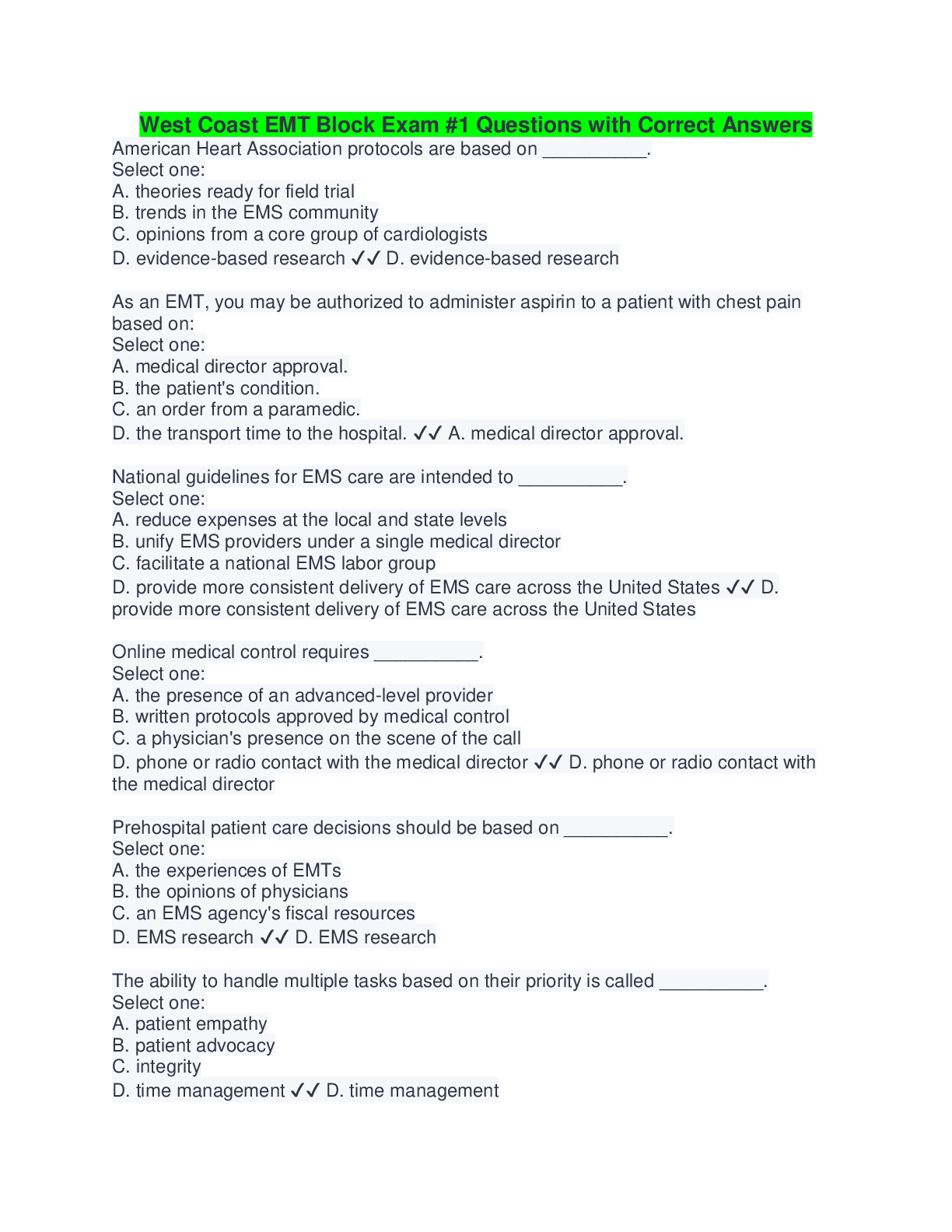

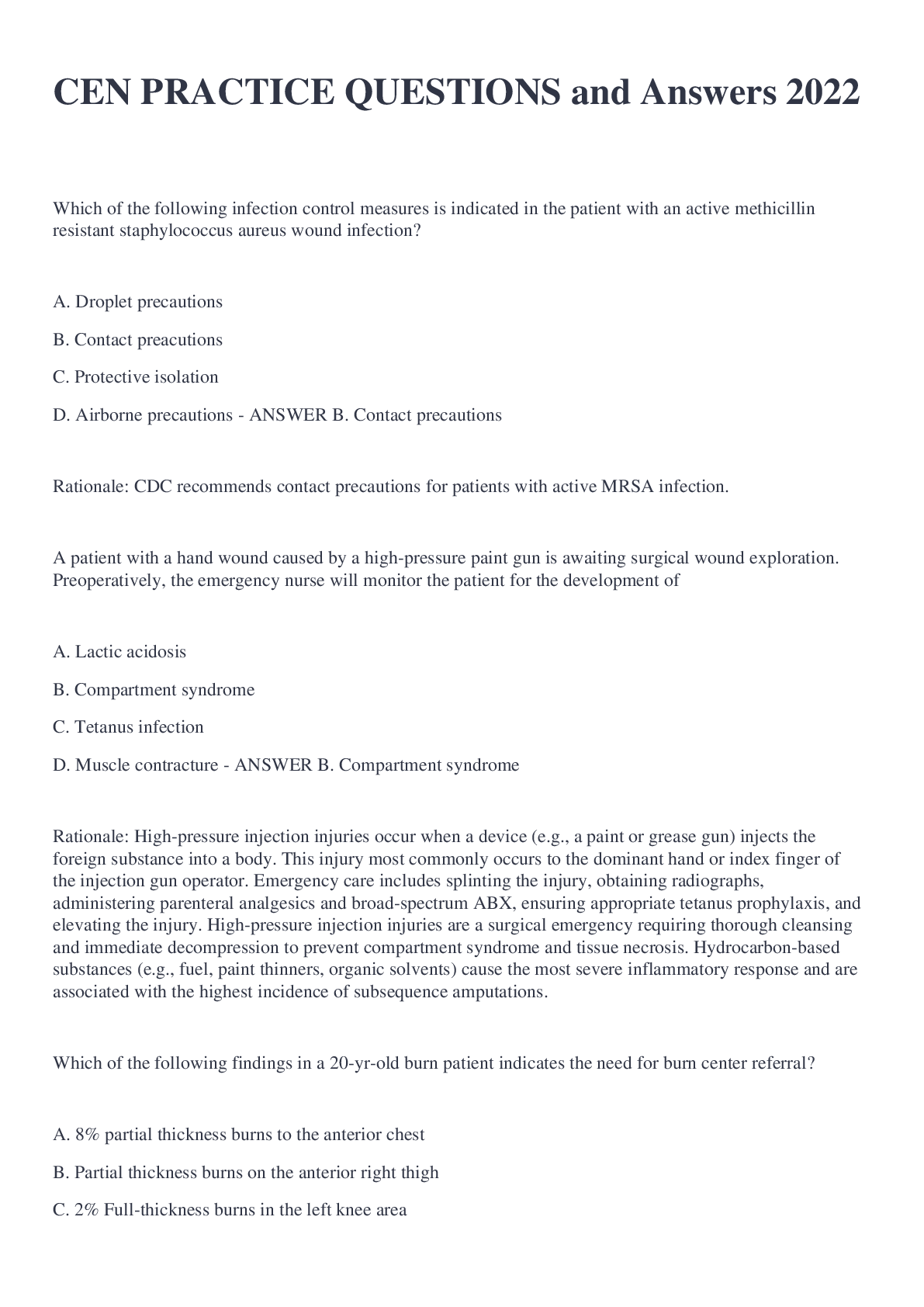


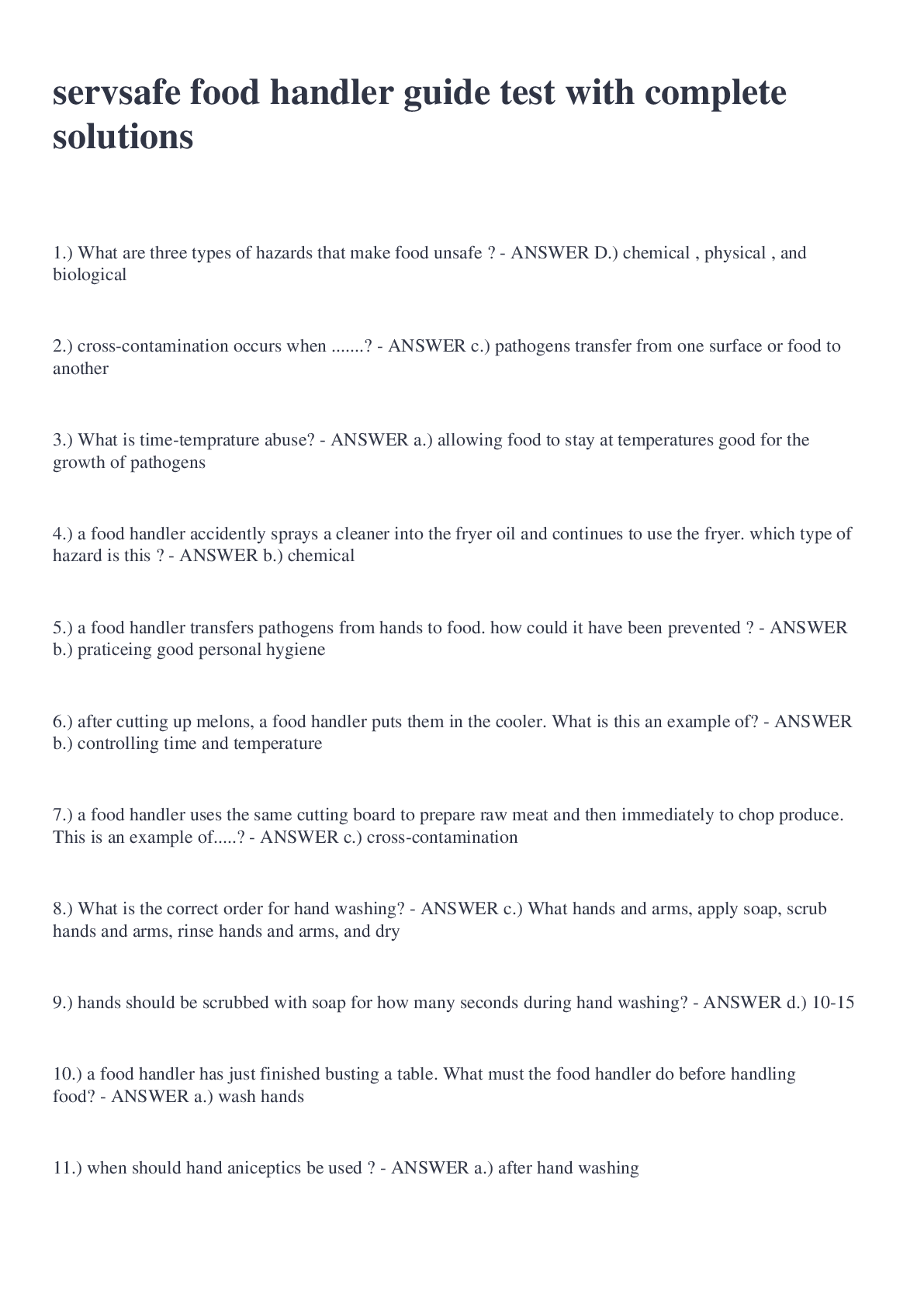


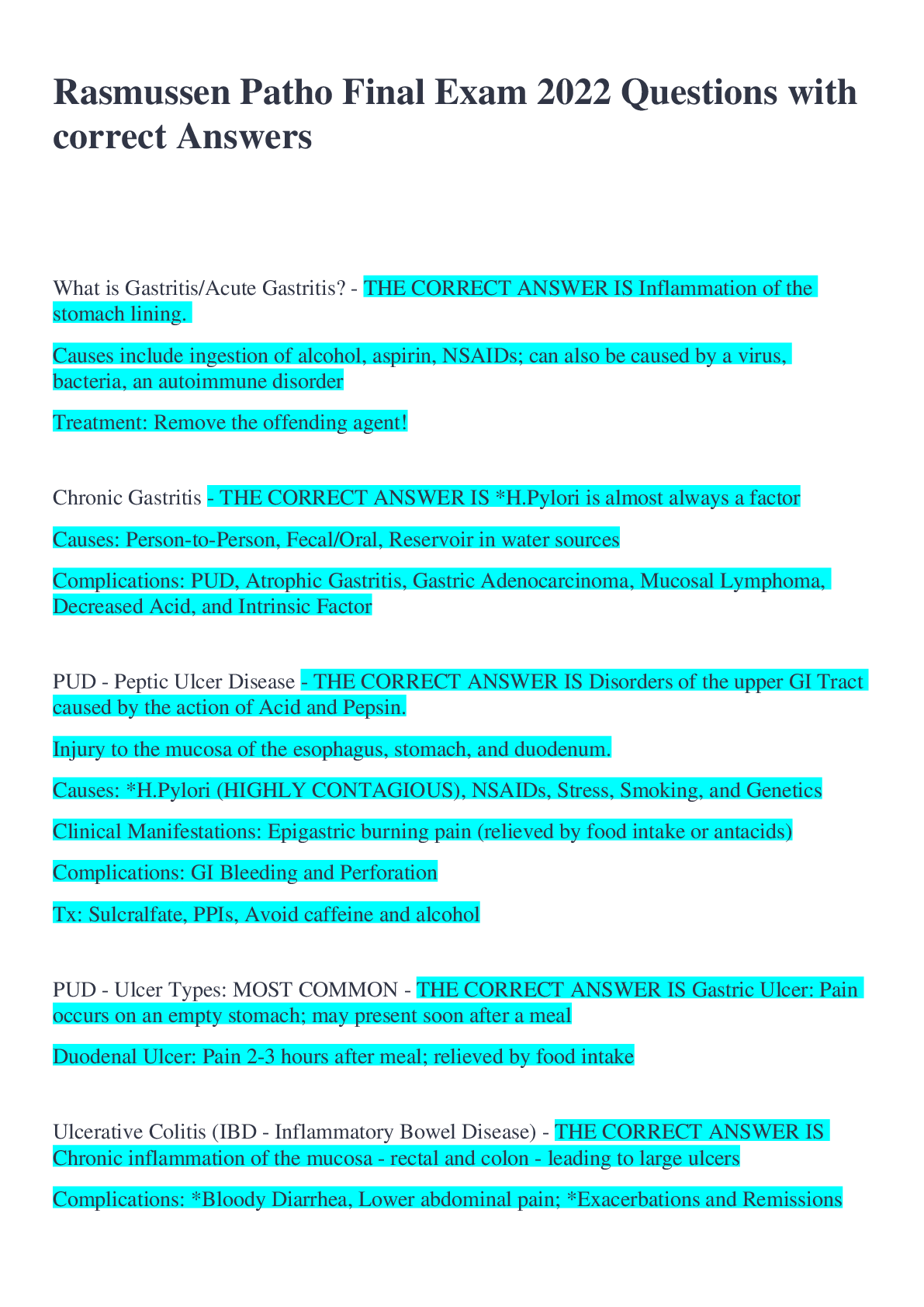
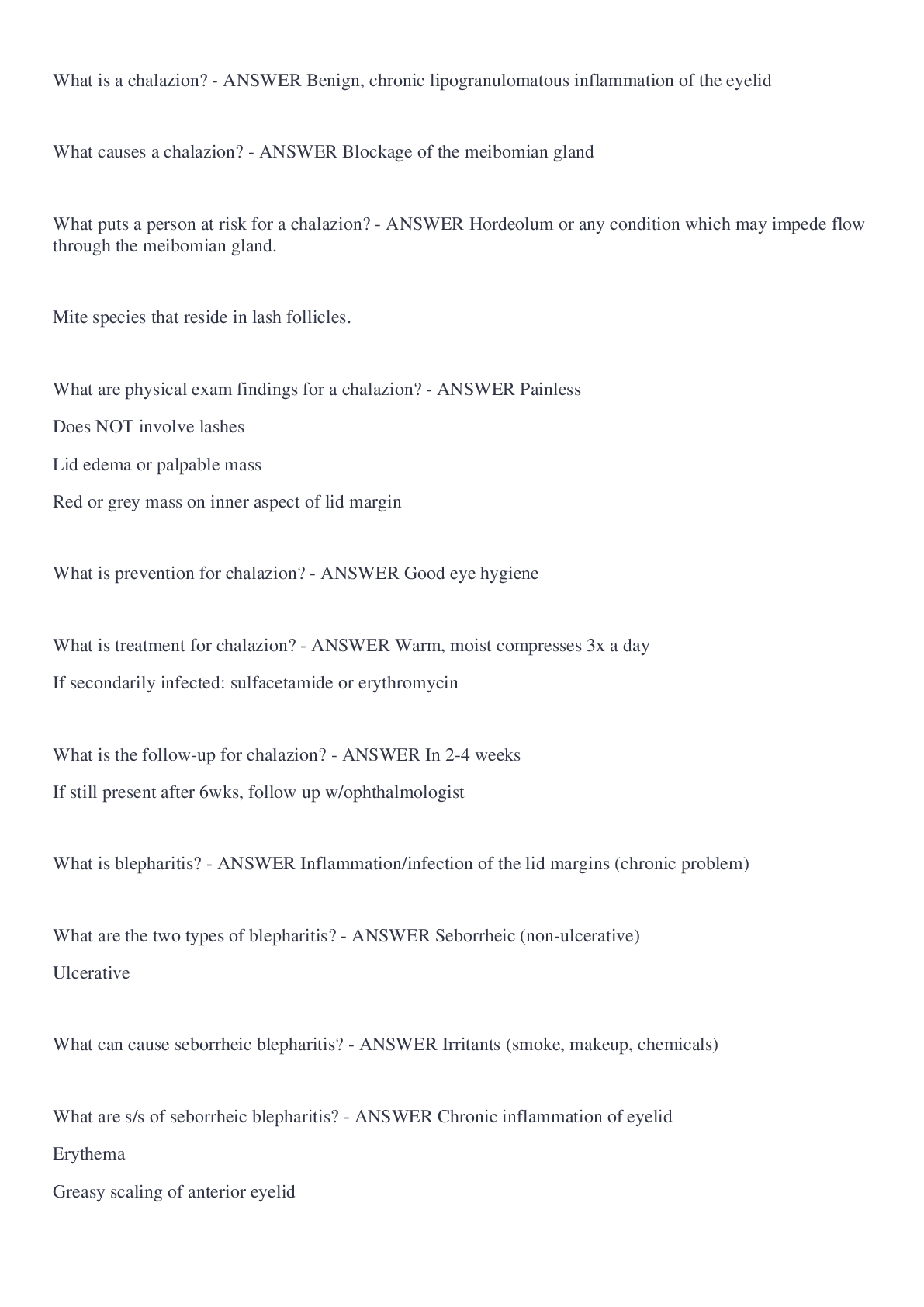
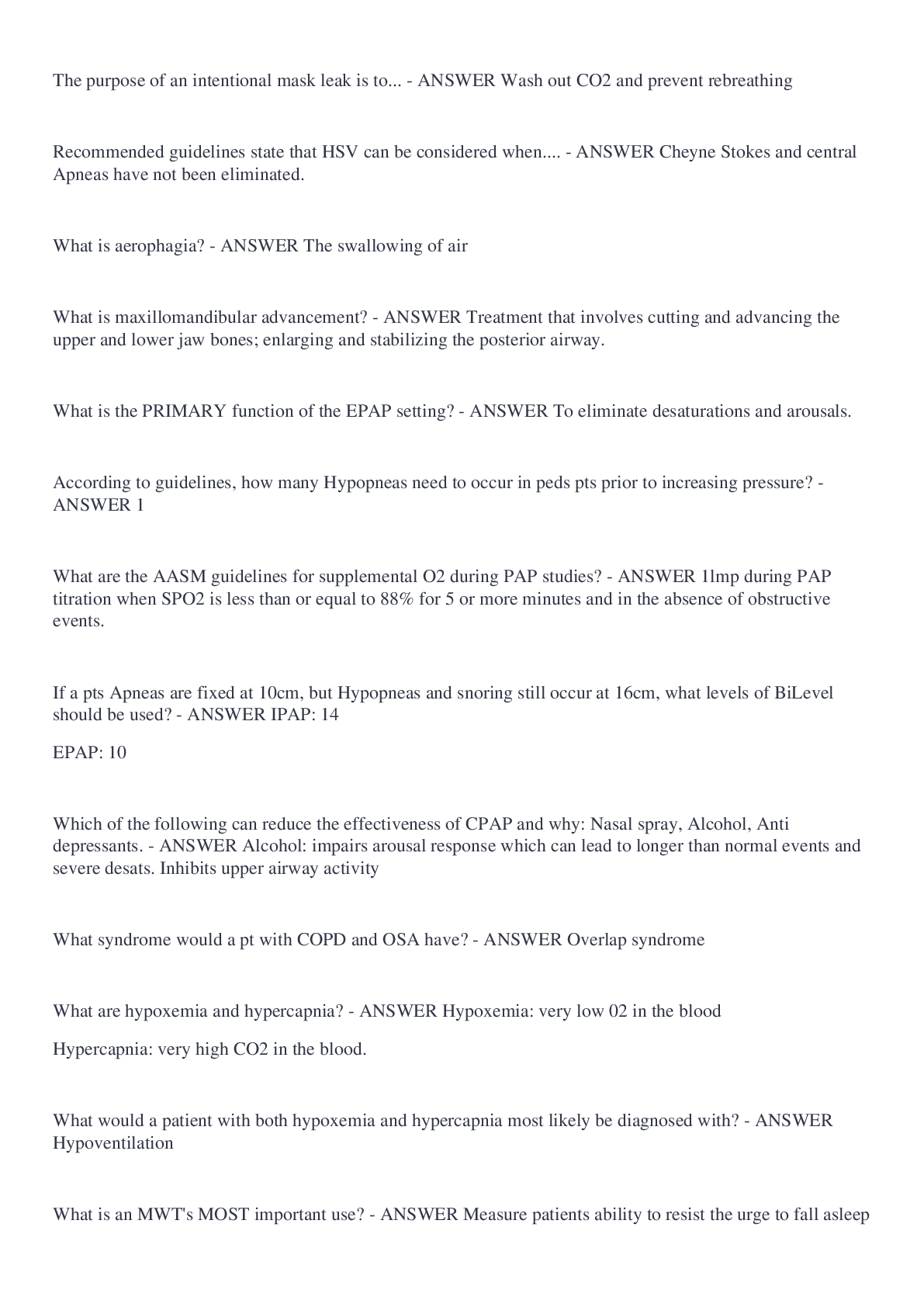




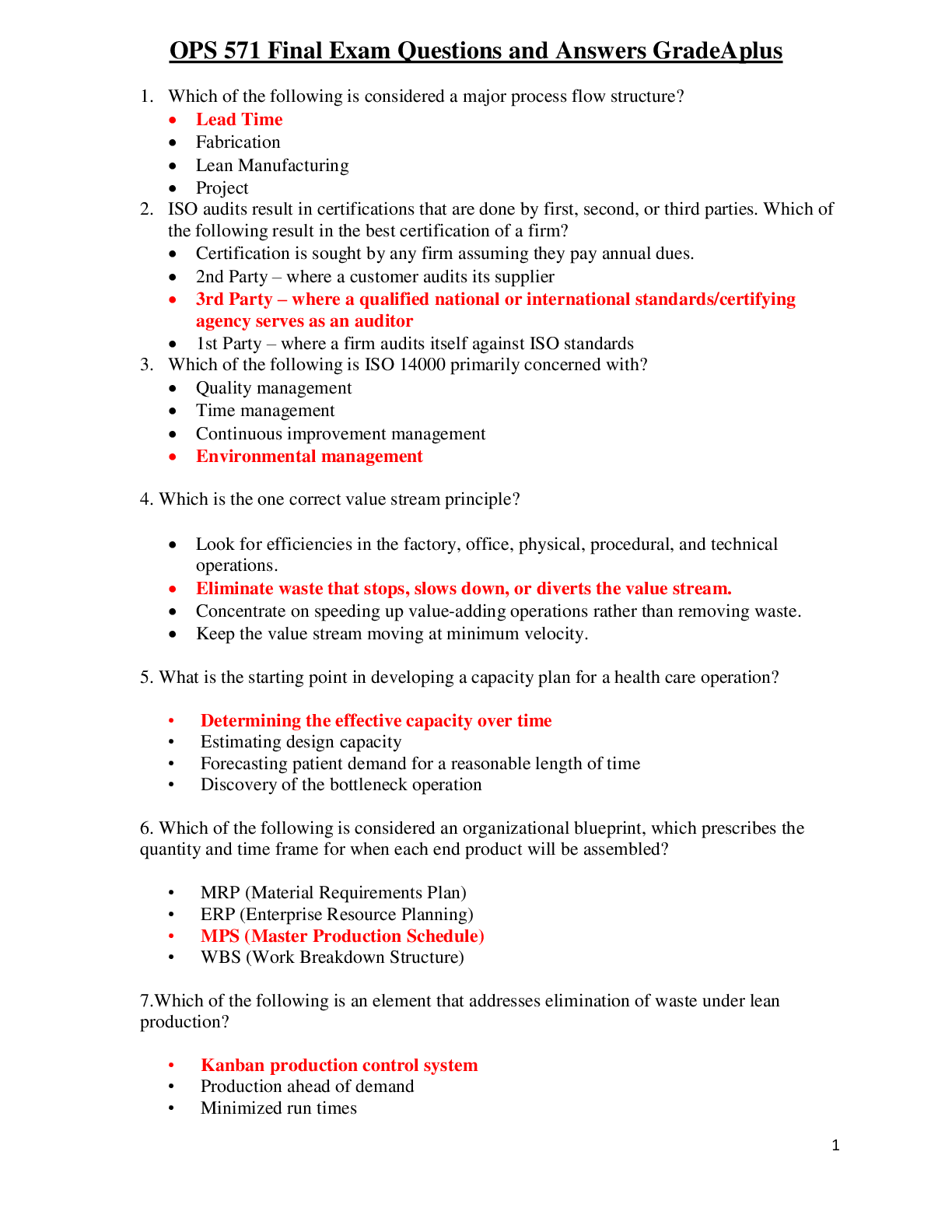
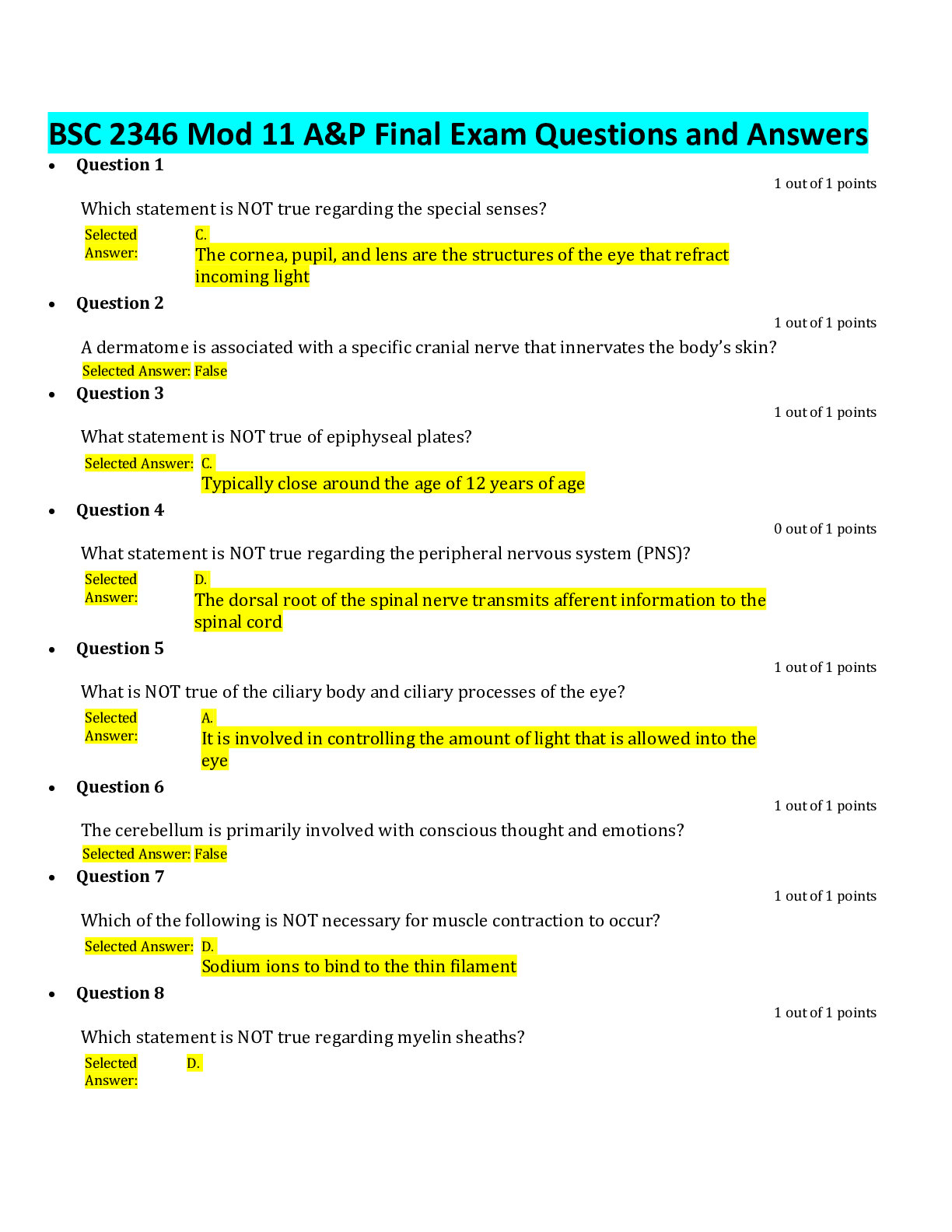


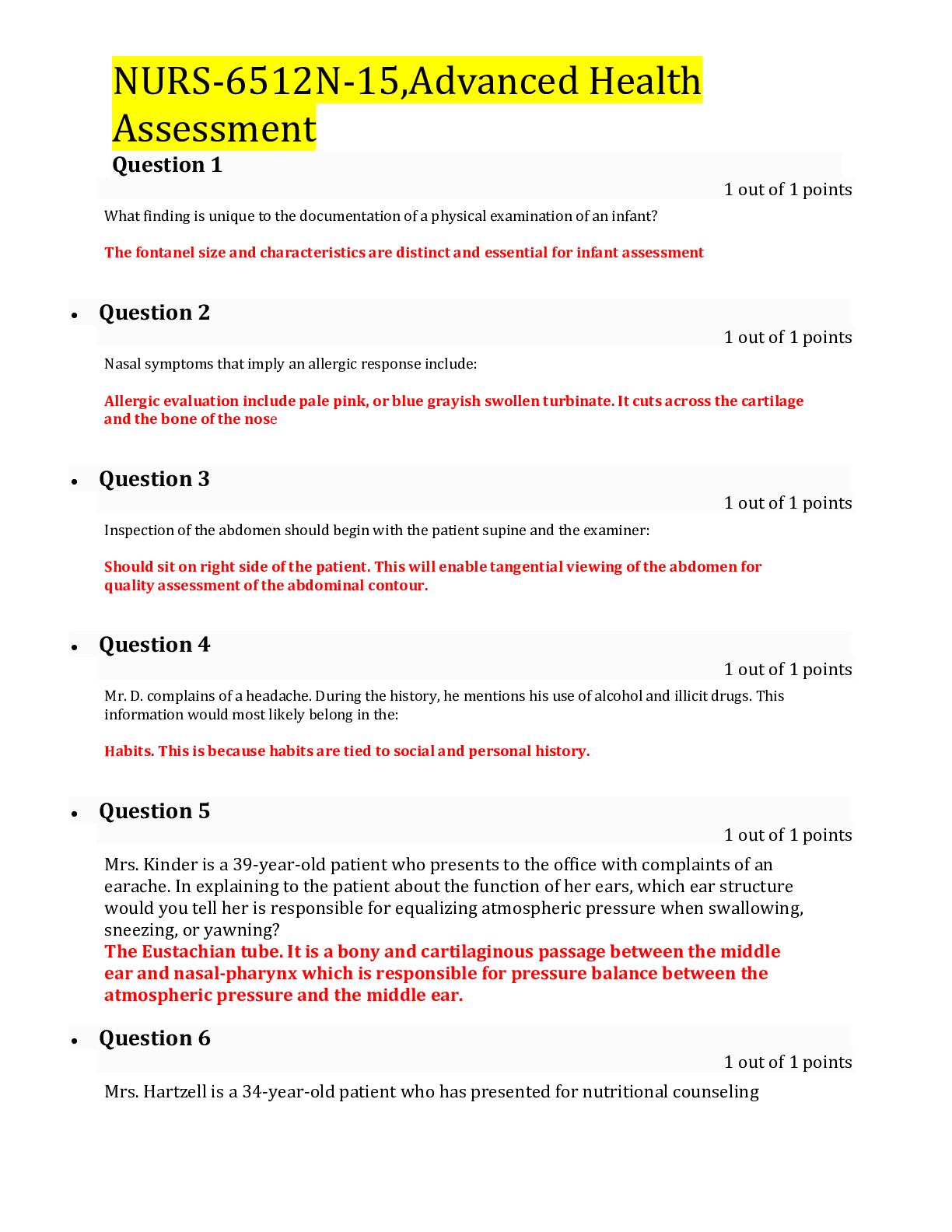
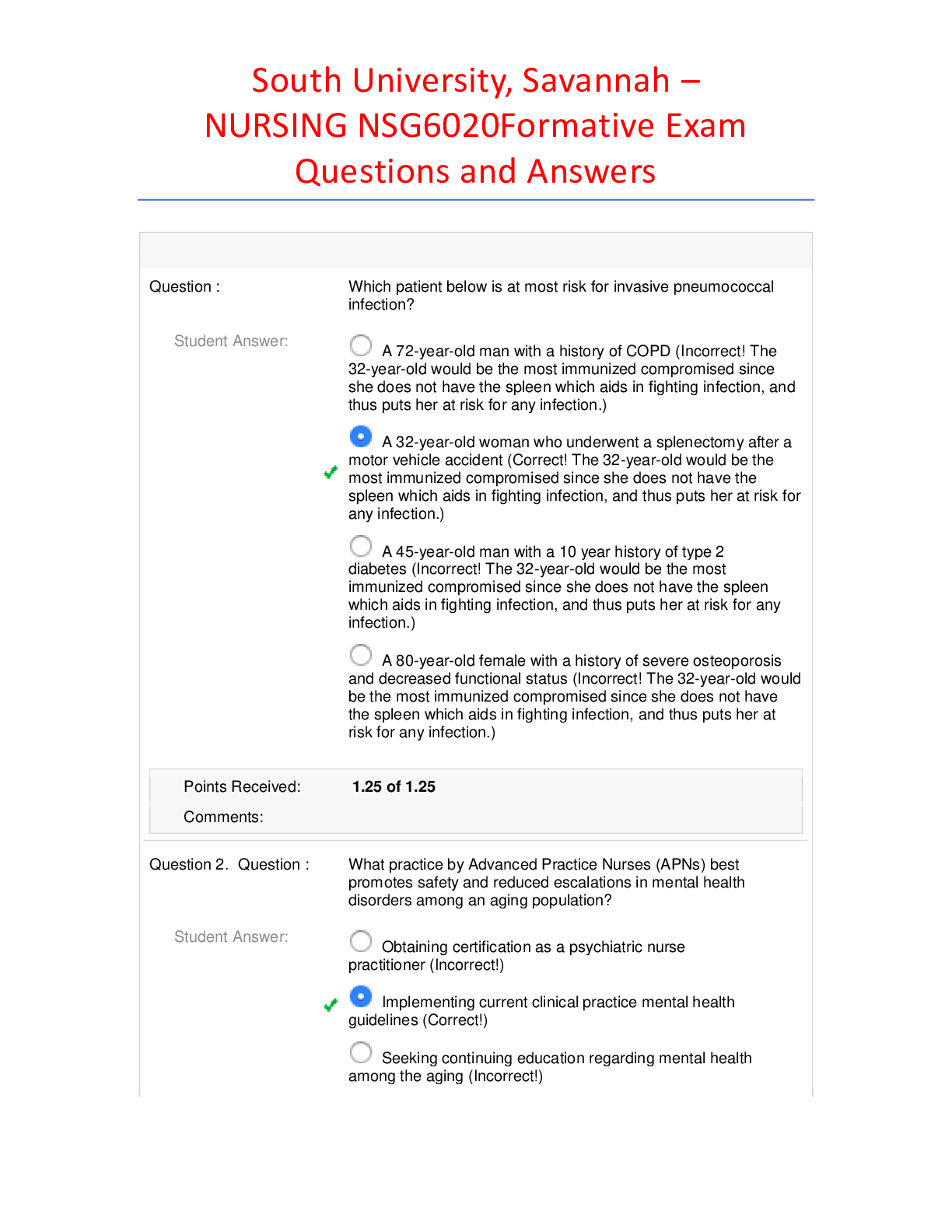
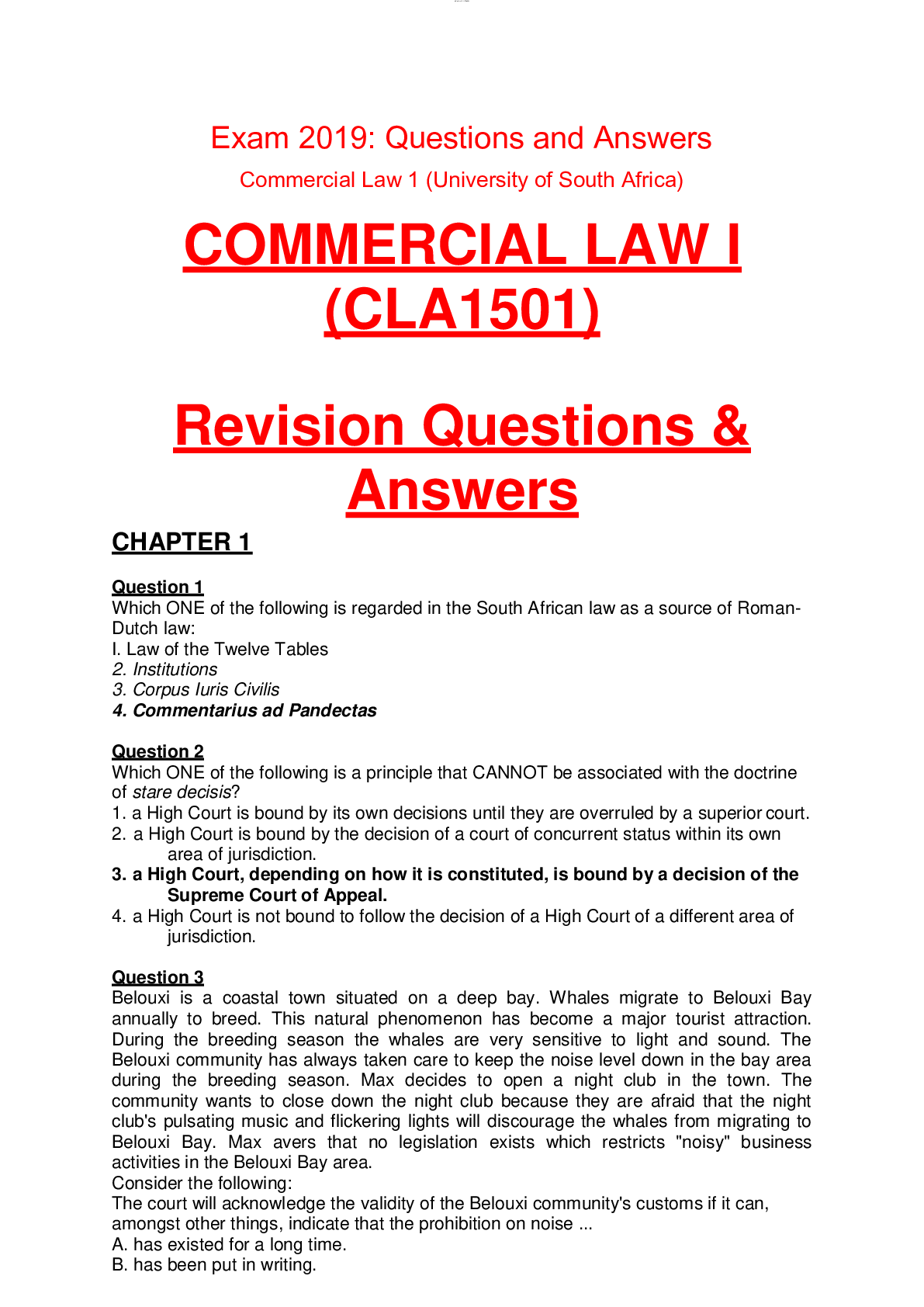

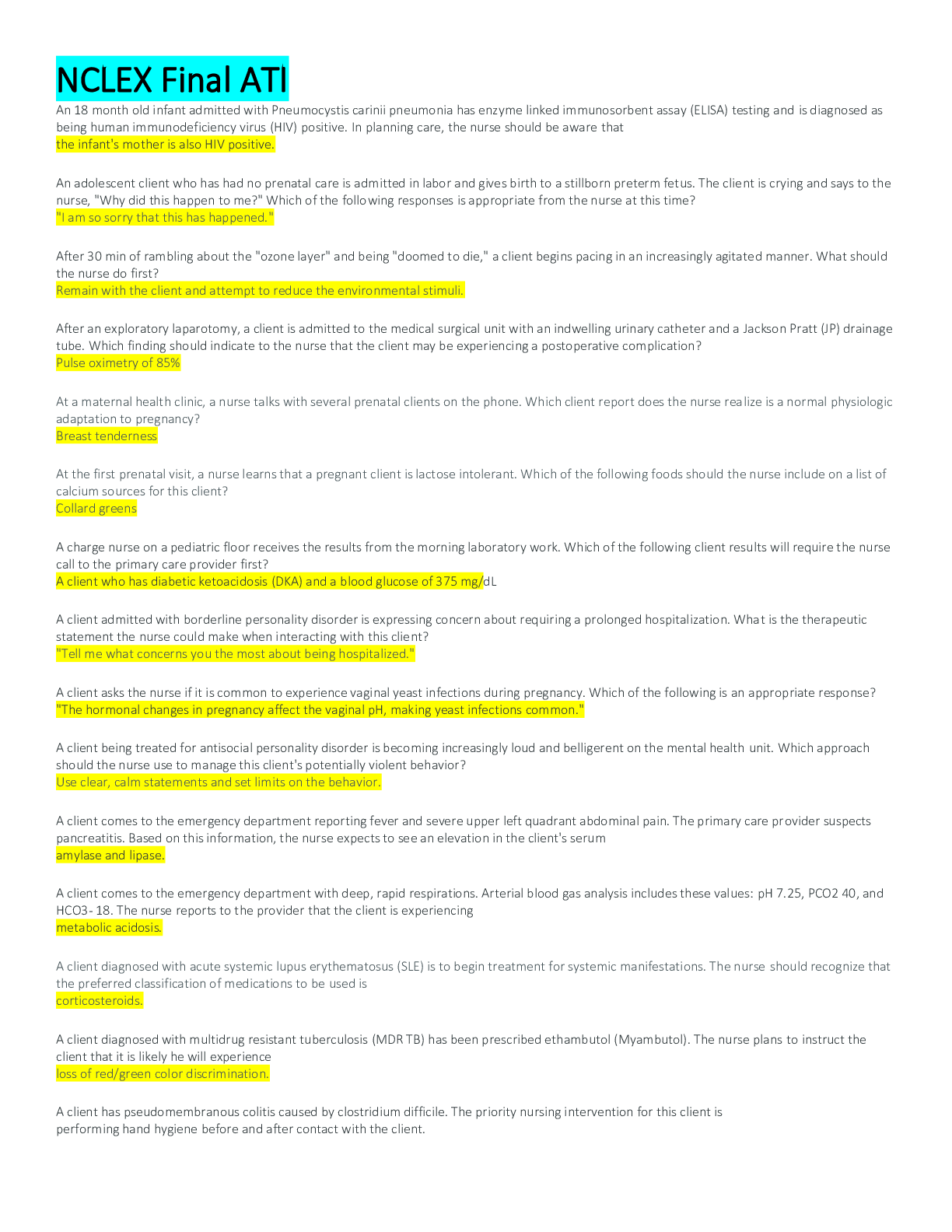
.png)


